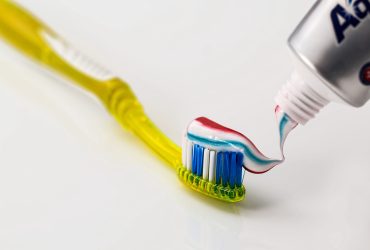What Is the Typical Aftercare for Tooth Extractions?
Tooth extraction is a common dental procedure for various reasons, such as severe tooth decay, gum disease, impacted wisdom teeth, orthodontic treatment, trauma, or infection. After the extraction, following proper aftercare guidelines is essential to ensure a smooth and complication-free recovery. This article explores the typical aftercare steps for tooth extractions to help patients understand what to expect and how to care for their oral health during the healing process.
Understanding Tooth Extractions
Before delving into aftercare, it’s important to understand what tooth extractions entail. Tooth extractions involve the removal of one or more teeth from their sockets in the jawbone. Dentists typically perform two types of extractions:
- Simple Extractions: These are relatively straightforward procedures where a dentist loosens the tooth using special instruments and then removes it with forceps. Simple extractions are usually performed on visible teeth that are fully erupted.
- Surgical Extractions: Surgical extractions are more complex and involve the removal of teeth that are not easily accessible or have broken off at the gumline. This type of extraction may require an incision and sometimes even bone removal.
Smooth and painless tooth extractions in Tracy are accessible to everyone. The local dental professionals there are well-equipped and trained to provide painless interventions, making tooth extractions less frightening for patients.
All About Tooth Extractions Aftercare
After tooth extraction, proper aftercare is crucial to prevent complications, reduce pain and swelling, and promote a smooth recovery. Here are the typical aftercare steps and recommendations:
1. Gauze and Blood Clot Formation
After the extraction, your dentist will place a piece of sterile gauze over the extraction site and ask you to bite down on it firmly. This pressure helps in blood clot formation, which is vital for healing. Leave the gauze in place for the recommended time, usually around 30 minutes.
2. Pain Management
Pain and discomfort are common after tooth extractions. Your dentist may prescribe pain medication or recommend over-the-counter pain relievers like ibuprofen. Follow the dosage instructions carefully and take the medication as needed to manage your pain. Avoid aspirin, as it can increase the risk of bleeding.
3. Swelling and Bruising
Swelling and bruising around the extraction site are normal. Applying an ice pack to the affected area for 20 minutes on and 20 minutes off during the first 24 hours can help reduce swelling and discomfort. Be sure to wrap the ice pack in a cloth to prevent direct contact with the skin.
4. Oral Hygiene
Maintaining good oral hygiene is crucial during the recovery period. However, avoid brushing or rinsing vigorously near the extraction site for the first 24 hours to prevent dislodging the blood clot. After the initial day, gently rinse your mouth with warm saltwater (a teaspoon of salt in a cup of water) several times a day to keep the area clean. You can resume brushing your teeth but be cautious around the extraction site.
5. Diet Modifications
Stick to a soft, cool diet for the first few days after the extraction. Avoid hot, spicy, and crunchy foods that could irritate the extraction site. Some recommended foods include yogurt, applesauce, mashed potatoes, and scrambled eggs. As you heal, gradually reintroduce regular foods into your diet.
6. Rest and Activity
Rest is crucial to the healing process. Avoid strenuous physical activity for at least 24 hours after the extraction to minimize the risk of bleeding and complications. Additionally, try to keep your head elevated while sleeping to reduce swelling.
7. Avoid Smoking and Alcohol
Smoking and alcohol consumption can delay healing and increase the risk of complications. It’s best to refrain from smoking and alcohol for several days after the extraction.
8. Follow-Up Appointments
Your dentist will schedule a follow-up appointment to monitor your healing progress. Attending this appointment and following any additional instructions from your dental care provider is important.
Dental implants could be considered after the extraction site heals completely. Dental implants can ensure you retain that beam-worthy smile. Moreover, dental implants for healthy smiles are the gold standard in tooth replacement. They support the jawbone’s health, prevent bone loss, and function like natural teeth – making them an excellent option post-extraction.
9. Signs of Complications
While tooth extractions are generally safe, being aware of potential complications is essential. Contact your dentist immediately if you experience severe pain, excessive bleeding, signs of infection (such as pus or fever), or the extraction site is not healing properly.
Quality Dental Care
Proper aftercare of a tooth extraction is integral to quality dental care. Regular check-ups and cleanings, a balanced diet, good oral hygiene, and timely interventions all contribute to keeping your teeth in the best possible condition.
Rest assured that meticulous dental care can provide you with a stellar smile. If you wish to learn more about maintaining oral health, numerous resources are available online and at your local dental clinic.
Conclusion
Tooth extractions may seem daunting, but knowing what to expect can help ease any fears or doubts. Remember, sticking to the prescribed aftercare routine will help facilitate a speedy recovery and get you back to your routine in no time. Whether you’re considering dental implants, looking to learn more about quality dental care, or curious about tooth extractions, remember that a regular oral hygiene routine is your best defense against dental issues – prevention will always be better than cure.




